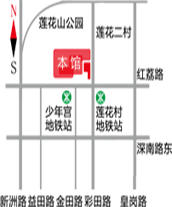
- preface
-
The Chinese New Art Movement has been going on for over 30 years now. Over the past 30 years, with the transformation of the economic and cultural environment on which art relies for survival, artistic concepts and forms have also undergone changes. From a historical perspective, these 30 years precisely reflect the process of the self-discipline of contemporary Chinese art and the continuous competition of various factors beyond art. This special era has given birth to extraordinary contemporary Chinese art. Some people say that the era of contemporary art creating myths has passed, implying that art should return to its true order. However, 30 years of crowded ideological trends and noisy concepts are enveloped by various artistic events, just like Kiecher's "Mirror House". Only with a direct blow to oneself can one break the illusion and return to the real world. The post-70s and post-80s generations are the generation of artists who grew up in this "mirror house". Their artistic creations are a turning point for the return of contemporary Chinese art from the "big era" to the "small era", and "on the road" is not only their collective memory of youth, but also the core of their outlook on life and values. As presented in their creations, "on the road" is not only a state, but also an attitude!
The concepts of "post-70s" and "post-80s" first appeared in the poetry industry and have since sparked widespread debate throughout the literary world. They have given extensive attention to the pioneering role of the "post-70s" and "post-80s" writing groups and their fleeting cultural motivations, as well as how "intergenerational logic" emerged and dissipated. Although there was no similar phenomenon of the "post-70s" and "post-80s" groups in the art industry during the same period, the transitional differences between the "post-70s" and "post-80s" creative groups and their predecessors in terms of survival status, knowledge structure, academic background, and creative status are self-evident. A new art ecology that reflects their attitude towards life, aesthetic concepts, and academic direction has quietly formed. Of course, the novelty of the new art ecosystem cannot be denied for its continuation and continuation of tradition, especially the academic context and rules formed since 1985. So, what kind of concept, form, and ecology does the new art ecology present? Where is the new manifestation of new art? What is the turning point of its significance in the development of contemporary art? This is the topic that we intend to focus on and discuss in our series of academic activities.
It should be noted that the presentation of art is certainly related to an era, and artists in the same period must have certain similarities in cultural attention and work presentation. However, artistic creation, especially in the contemporary context, is more about the individual's inner self and endowment. Therefore, it is difficult and impossible for us to make a unified value judgment for a generation with a concept first holistic thinking. Instead, we must connect individuals with node significance through the chain of history to achieve a sensory and objective presentation. At the same time, historical writing without a certain examination distance is inevitably not objective enough. Therefore, although this series of academic activities is aimed at accumulating historical knowledge, it is not dedicated to drawing any historical conclusions. Instead, it strives to present vivid artistic problems in the current comparative collection from the perspective of experienced individuals, and provide certain clues for the writing of art history through the analysis and interpretation of problems. So compared to the many avant-garde biennials and biennials, this series of academic activities emphasizes more on the documentary nature of the content.
The focus of this year's nominated exhibition and forum will be on "New Ink Painting". A recommended academic team consisting of 27 active critics, curators, and senior artists from both domestic and international backgrounds will participate in the exhibition. After reviewing and analyzing the development of contemporary art related to ink painting in China, with the "post-70s" and "post-80s" as the main creative forces, 40 outstanding young artists with experimental and pioneering skills in this field have been selected, and their unique appearance and aesthetic character have been formed. Along with their brilliant works, there is also the academic philosophy of young critics with the same growth background as them. Where to seek novelty in new ink painting? What is its value core and bottom line? What are the new expressions of new ink painting? The theoretical construction and historical writing of the new ink painting will become the focus of our discussion this year. I hope this event is not only a process of artistic presentation, but also a process of knowledge production.
Sincere thanks to the experts and partners in various fields who have worked hard for this nomination exhibition and forum!
Shenzhen Guanshan Yue Art Museum
September 2014



